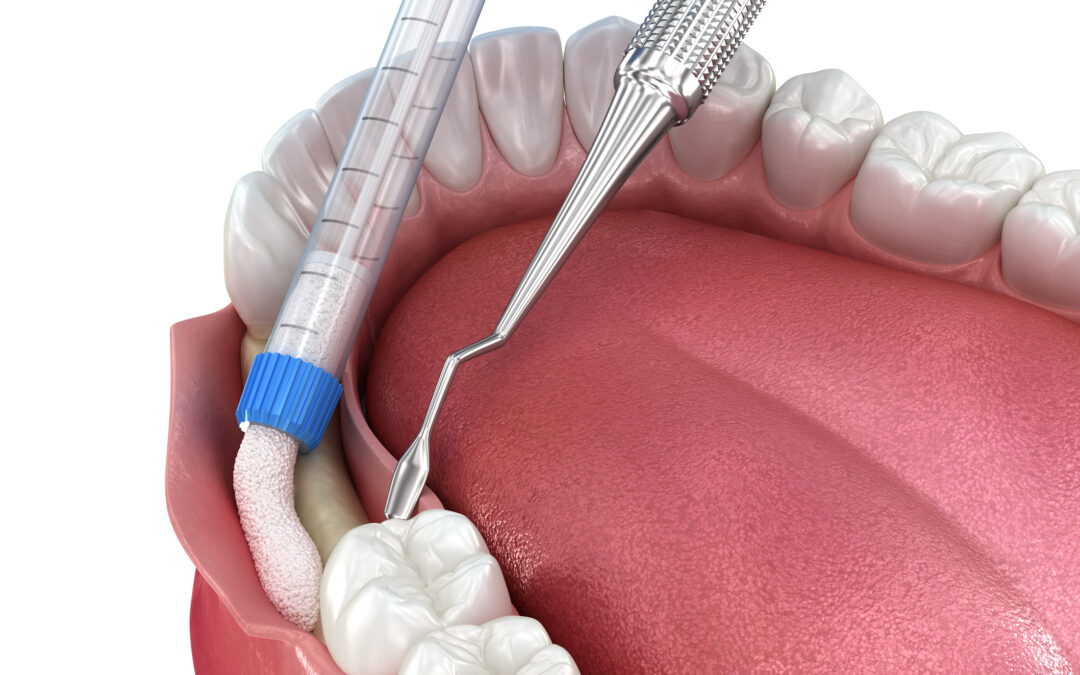When a tooth is lost or extracted, the changes beneath the surface aren’t always immediately visible—but they can be significant. Without the stimulation of a tooth root, the jawbone in that area begins to shrink, leading to bone loss that can alter facial structure and complicate future dental implant placement. At Precision Periodontal and Implant Center, bone grafting helps prevent these long-term issues, preserving your bone density and protecting your oral health for years to come.
Why Bone Loss Happens After Tooth Loss
Your jawbone relies on pressure from chewing to stay strong. When a tooth is missing, the underlying bone no longer receives that stimulation, and the body begins to reabsorb it. Within the first year after an extraction, patients can lose up to 25% of bone volume in that area. Over time, this can lead to:
- Collapsed or sunken facial appearance
- Difficulty supporting dental implants or dentures
- Shifting of remaining teeth
- Changes in bite and alignment
Bone grafting prevents these problems by restoring and reinforcing the bone before significant resorption occurs.
How Bone Grafting Works
Bone grafting is a routine, minimally invasive procedure that replaces or builds up bone in the jaw. At Precision Periodontal and Implant Center, the process typically involves:
- Assessment: Your periodontist evaluates bone volume using advanced imaging to identify areas of deficiency.
- Graft placement: Bone grafting material—either from your body or a biocompatible donor source—is placed into the area where bone loss has occurred.
- Healing and integration: Over the next few months, your natural bone cells gradually replace the graft material, creating a strong, stable foundation for future restorations like dental implants.
In some cases, bone grafting can be performed immediately after tooth extraction—a process known as socket preservation—to prevent bone loss from occurring in the first place.
The Connection Between Bone Health and Dental Implants
A healthy jawbone is critical for the long-term success of dental implants. If the bone isn’t thick or dense enough, implants may not integrate properly, leading to instability or failure. By strengthening weakened areas through bone grafting, patients can achieve the bone volume needed for a secure and lasting implant.
Even if you’ve been missing a tooth for years, bone grafting can often restore enough structure to make implant placement possible.
Benefits Beyond Implants
While bone grafting is often performed in preparation for dental implants, its benefits go beyond tooth replacement. Strengthening the jawbone also helps:
- Maintain facial symmetry and natural contours
- Prevent neighboring teeth from shifting
- Support long-term gum and oral tissue health
By addressing bone loss early, you can avoid more complex and costly treatments down the line.
What to Expect During Recovery
Most patients experience minimal discomfort following bone grafting. Mild swelling or tenderness is common for a few days, but over-the-counter pain relievers and a soft-food diet usually help. Your periodontist will provide personalized aftercare instructions to promote healing and monitor your progress during follow-up visits.
As the graft integrates with your natural bone, you’ll gradually build a stronger, healthier jaw—ready for the next stage of your treatment plan.
Preserve Your Smile’s Foundation
Bone grafting plays a vital role in long-term oral health, ensuring that your jaw stays strong and capable of supporting dental implants or other restorations. Whether you’ve recently lost a tooth or are preparing for implant treatment, this procedure helps protect your smile’s structure and strength.
To learn more about bone grafting or schedule a consultation, call 310-708-3938 today. The team at Precision Periodontal and Implant Center will help you restore your bone health and preserve your smile’s foundation for the future.

